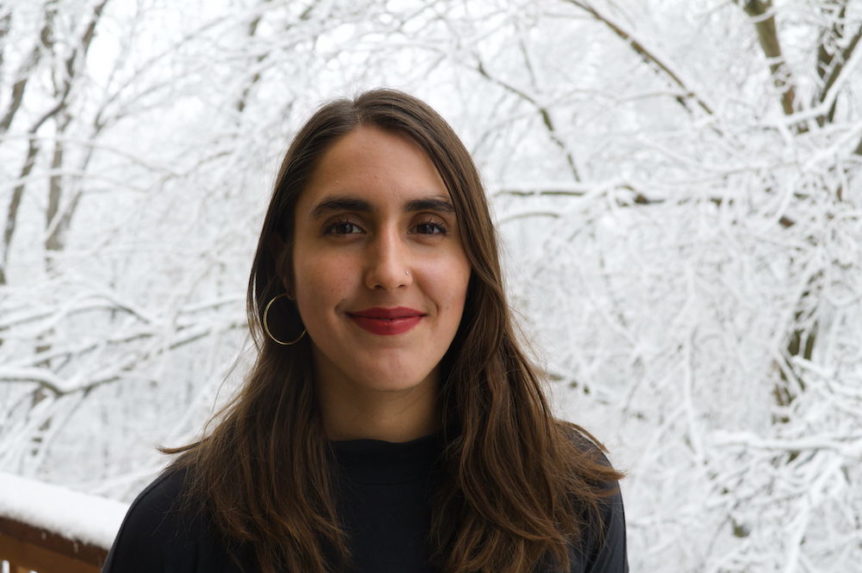Above: Sara Maillacheruvu, 27th Class Emerson Fellow.
In a typical Emerson field placement blog, fellows often begin with a reflection that compares where they’ve come from—their hometown, where they went to school, where they’ve worked—and where they are now, or where their field placement is located. 2020, of course, has been an unconventional year, and for good reason, the fellowship has operated on a remote basis this cycle. All the same, I have been told that northwest Arkansas, home to my field placement, the Native American Agriculture Fund (NAAF), is a beautiful corner of the country. The Ozark National Forest and Ouachita Mountains are a short drive away. There are mountains and rivers and waterfalls, rolling hills and blue-green forests.
Amid this landscape—and amid the nonprofit landscape more generally—NAAF is a unique organization. In the landmark Keepseagle vs. Vilsack case, Native farmers and ranchers alleged unfair lending practices within the U.S. Department of Agriculture (USDA). After ten-plus years of litigation, the class action suit was settled in 2010, with $680 million in funding made available to claimants, along with $80 million in debt relief. (Black farmers, as well as female and Hispanic farmers filed class action suits against the USDA on similar grounds and were awarded settlements.) In 2018, NAAF was created to manage the remaining funds, tasked with expending them through strategic grant making within 20 years.
As the largest grant-making organization dedicated solely to Native agriculture, NAAF has an important role to play in Indian Country. The USDA’s 2017 Census of Agriculture shows that 63% of Native farms make less than $5,000 in sales and government payments, in comparison to 44% of all U.S. farms. This disparity could partially owe to the factthat Native farmers and ranchers may be engaged in subsistence farming at higher rates than the general producer population. But it also owes to historical gaps in access to credit, market opportunities, and administrative burdensfaced by Native farmers, the results of centuries of policies of disinvestment. By working with 501(c)(3) organizations, educational organizations, Community Development Financial Institutions, and Tribes and Tribal instrumentalities, NAAF labors to change this narrative, empowering and supporting resilient Native food systems.
Through my placement at NAAF, I have learned—and unlearned—so much about Indigenous history, communities, and agriculture. In sifting through photos, videos, and reports as part of a storytelling project, I’ve been excited to see how NAAF’s grants can provide the seed funding for value-added producer projects, with the potential to become engines for regional economies. I’ve also come to understand how Native economies so often form the backbone of rural economies, as well as how the pandemic has laid bare existing inequities in access to healthcare among Native communities. My Emerson field partner, Lexie Holden (Choctaw), has been incredibly gracious in sharing resources, and NAAF’s staff, led by the amazing Janie Simms Hipp (Chickasaw), is a high-powered team of experts in their fields, including Valerie Segrest (Muckleshoot), a renowned Native food systems educator and nutritionist. Even on NAAF’s biweekly, all-staff Zoom calls, I find myself scribbling notes, jotting down court cases to look up and bills to research.
As part of my field report, I worked with Valerie on a document analyzing NAAF’s grant making. We combed through NAAF’s 2020 grantee portfolio to identify trends, pinpointing areas where other funders could step in to strengthen Native food systems. Because NAAF’s trust agreement dictates that it spend down its funds within 20 years, there is a need to demonstrate the strong financial need among Native producers, laying the groundwork for potential, additional funding streams from other sources.
I have written grants before but never analyzed a grant-making portfolio: it was fascinating to think through how funding, say, a community garden growing Indigenous crops might have long-term impacts on youth engagement in agriculture as compared to a 4-H program. What quickly became clear were the many levers of change and the necessity of each—to support the next generation of farmers, culturally-relevant programming for youth was required, but to support today’s producers, accessible financial services and lending opportunities were a must. While the impacts of a community lender may seem altogether different from those of an Indigenous foods educator, they are both laying pathways for success for Native farmers and ranchers, current and future. The underlining takeaway: there is strong financial need, across the Native agriculture ecosystem.
There are many ways that I will carry what I’ve learned at NAAF through to my policy placement and far beyond. NAAF works hard to center the voices of Native producers and people in all that they do, from writing a press release to figuring out how to deploy grant dollars. A strong sense of mission permeates their work and has made me reconsider and realign my own. This ability to braid purpose, to see the structure amid the details—the national forest for the shortleaf pines, and vice versa—is a lesson and a source of encouragement I’m sure I’ll return to.

